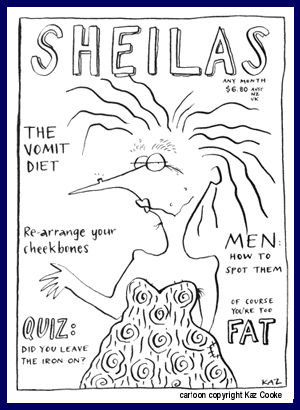|
Has your perspective of your body weight been
distorted by the media? It probably has, in some
way.
 Marilyn
Monroe would be considered overweight by today's standards.
She fluctuated between a size 14 and 18 dress! She was a
healthy woman who didn't look fat to anyone. Marilyn
Monroe would be considered overweight by today's standards.
She fluctuated between a size 14 and 18 dress! She was a
healthy woman who didn't look fat to anyone.
It's
important to stay real when setting goals and
assessing your current state. Here are some facts
that you should think about very seriously before
getting on the diet roller coaster:
Women
in America...
The average American woman is 5'4" tall and
weighs 140 pounds.
The
average American model is 5'11" tall and
weighs 117 pounds.
Most
fashion models are thinner than 98% of American
women.
Four
out of five American women say they're dissatisfied
with the way they look.
On
any given day, almost half of the women in the
United States are on a diet.
Dieting
is out of control in the United States...
Almost
half of American children between first and third
grades say they want to be thinner.
Four
out of five ten-year-old children are afraid of
being fat.
On
any given day, one in four men are on a diet.
Half
of our nine and ten-year-old girls say that being
on a diet makes them feel better about themselves.
More
than one out of three "normal dieters"
progress to pathological dieting. One fourth of
those will suffer from partial or full syndrome
eating disorders.
Americans
spend over forty billion dollars a year on dieting
and diet related products.
Between
five and ten million women and girls in the United
States struggle with eating disorders and borderline
conditions.
One
million boys and men struggle with eating disorders
and borderline conditions.
The
number of people with eating disorders and borderline
conditions is triple the number of people living
with AIDS (664,921 people are living with AIDS).
Eating
disorders affect at least three times as many
people as schizophrenia does (2.2 million people
are living with schizophrenia).
Sources:
Crowther et al., 1992; Fairburn et al., 1993; Gordon,
1990; Hoek, 1995; Shisslak et al., 1995., US Department
of Health and Human Services, HIV/AIDS Surveillance
Report 1998, Treatment Advocacy Center, 1999, Smolak,
1996., Mellin et al., 1991., Collins, 1991., Shisslak
& Crago, 1995.

|

